The Zeppelin Bend is the best, strongest survival knot one can possibly use for joining two lines of similar diameter. It is very unlikely to slip open or jam shut, and can be untied fairly easily having been loaded (though like most bends, not while loaded).
Additional Information
- In spite of its name, it is unlikely to Zeppelin Bend was ever used to tie up zeppelins. Bob Thrun, a noted caver, was probably the inventor, though it’s origins remain uncertain.
- A very in depth paper (which I will not try to paraphrase, as I could not do it justice) is available on the PACI website (at #4 in the table, password “thankyou”), should you wish to know more about this wonderful knot.
Step 1. Make a bight in the end of each line, with working ends on different ‘sides’. The picture below shows how is should look:
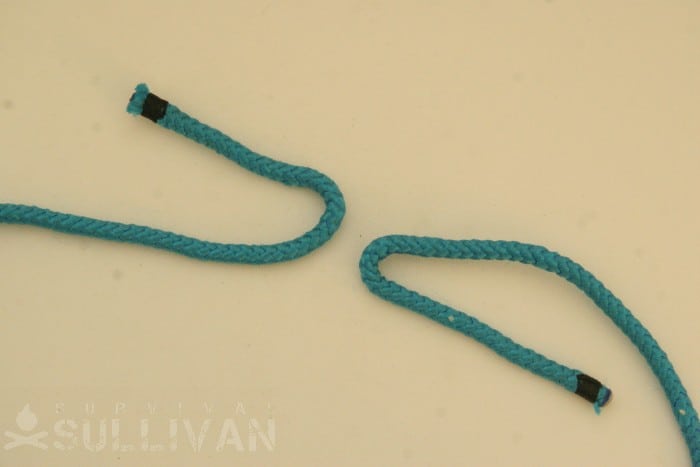
The picture below shows a common mistake Here the working ends are on the same ‘side. Don’ do this, it won’t work!
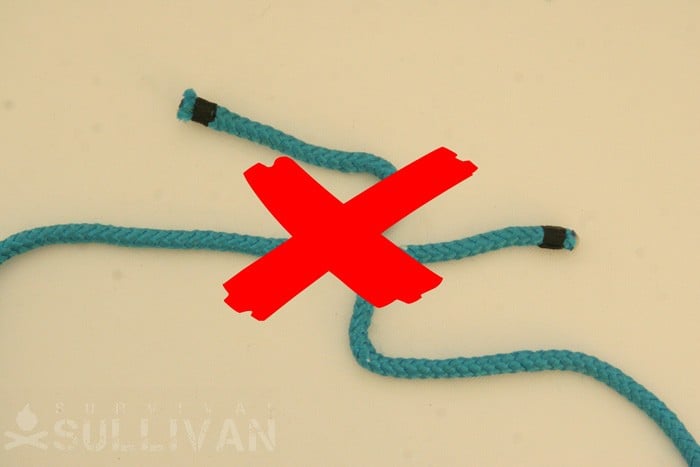
Step 2. Overlap the two bights. These instructions assume that the right hand bights goes over the left:
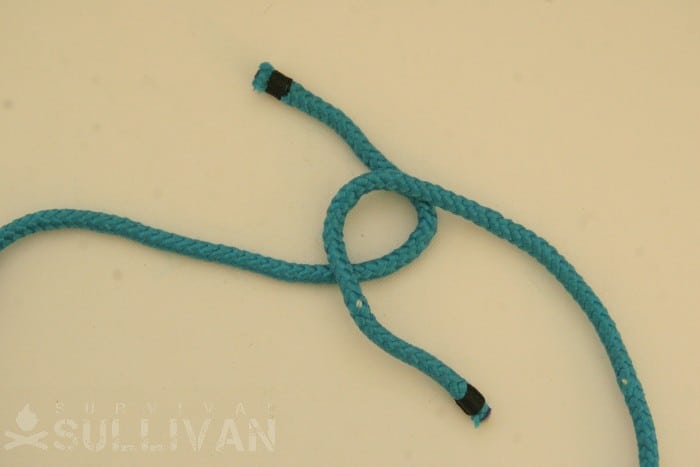
Step 3. Pass the working end of the upper bight over its own staning end, forming a loop:
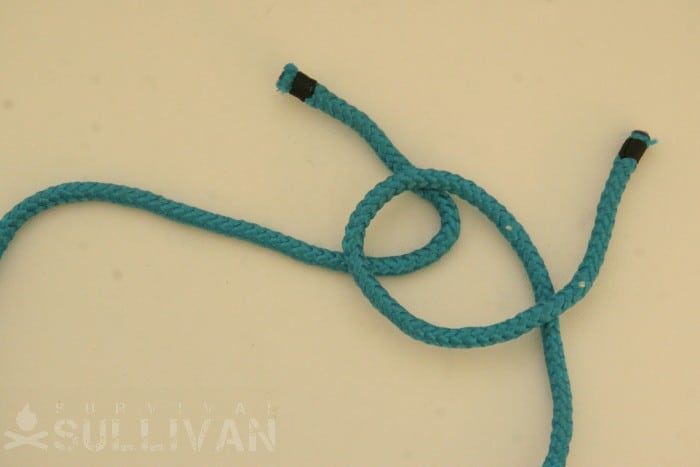
Step 4. Pass the working end of the lower bight under its own standing end, also forming a loop:
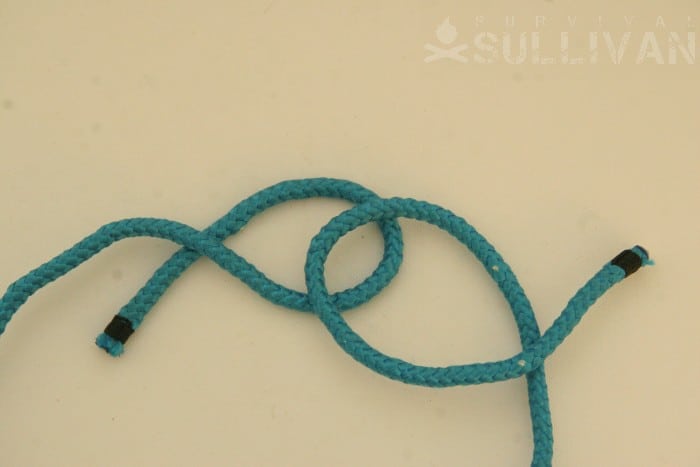
Step 5. Pass the working end of the upper loop up through the central hole created by both loops:
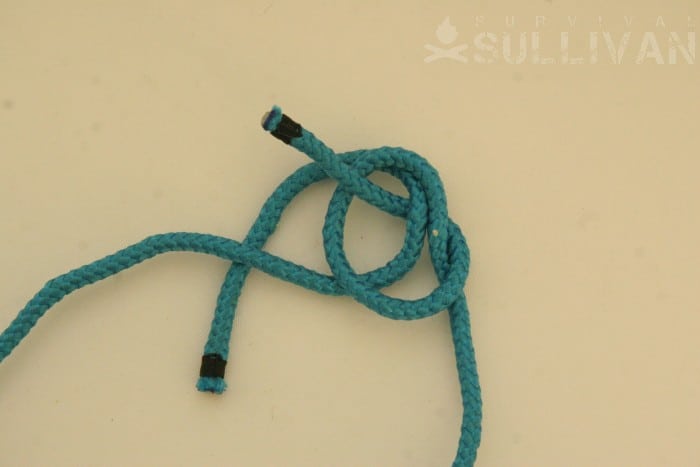
Step 6. Pass the working end of the lower loop down through the two loops, effectively retracing the last step:
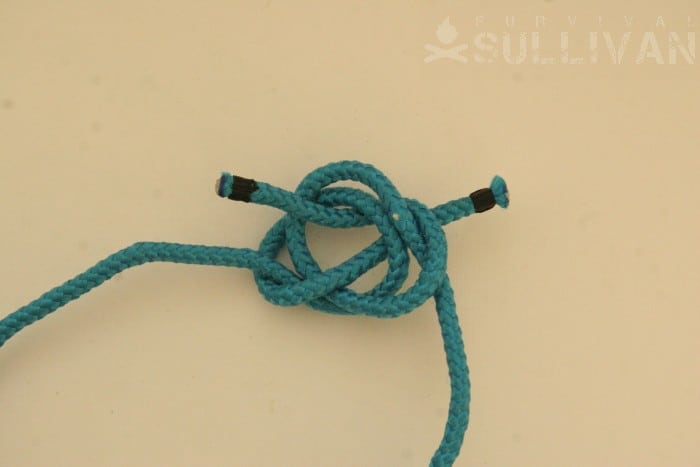
Fina Step. Pull first on the working ends, then the standing ends to tighten the knot. The zeppelin bends is fiddly to tighten, but should eventually look like this:
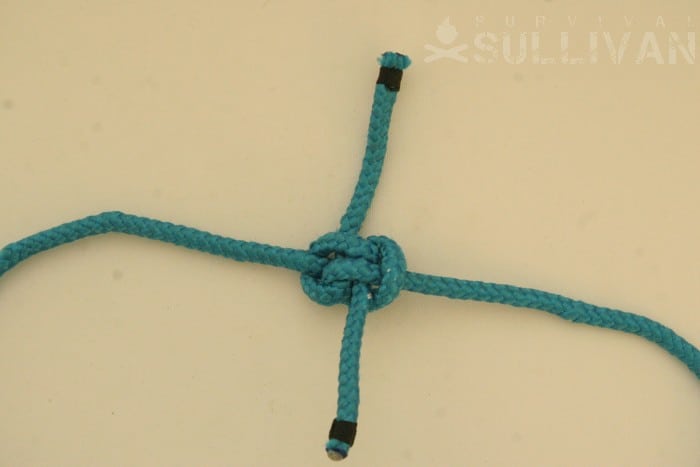
Related Knots
- The Zeppelin Bend is fundamentally two interlocking, opposite ‘handed’ Overhand Knots
- The Zeppelin Bend is one of a family (in fact, the best of the family) of interlocking-overhand-knots bends: the Hunter’s Bend, Ashley’s Bend and the Carrick Bend
- The Zeppelin Loop is formed by tying the same structure, but in only piece of line, connecting one end to the middle.
In Conclusion
The Zeppelin Bend is hands-down the best end-to-end joining knot. It is slightly difficult to tie, and not well known, but if you are serious about handling line, you should definitely know this one.
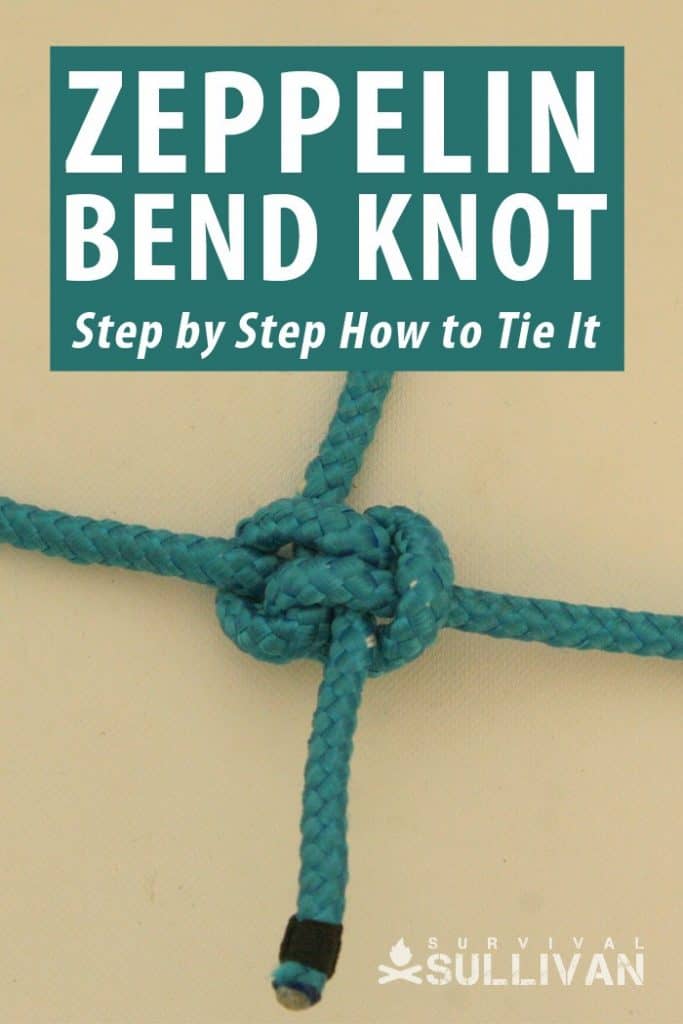
Nick O’Law has been exposed to survival from a very young age. In his teenage years, he learned A LOT about bushcrafting, such as making snares and traps, and even how to make DIY knives.
If you haven’t ye read and tried his knot-making articles on Survival Sullivan, you should definitely check them out.
